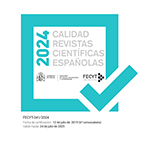Diffusione e motivazione di alcune novità recenti nell’uso di parole italiane
Abstract
Ci si richiama alla distinzione tra grammatica “clericale” prescrittiva e “laica” descrittiva, per esaminare i casi di nuovi usi (soprattutto nuovi significati) di parole italiane la cui notevole diffusione in due grandi corpora di lingua scritta (le annate 1992-2001 del quotidiano La Stampa e il corpus web RIDIRE) li segnala come “errori” in qualche misura (diversa caso per caso) sulla via di diventare innovazioni ammissibili perché consacrate dall’uso effettivo diastraticamente e diafasicamente alto. Se ne fornisce una classificazione basata sul tipo di causa che può avere condotto i parlanti ad adottare il nuovo uso. Si tratterà (a) dell’influsso analogico o addirittura dello scambio di significato indotto dalla presenza nella lingua di un altro termine formalmente contiguo e più accessibile; (b) di una interpretazione “alleggerita e impoverita”, cioè privata di qualche tratto semantico, per cui i parlanti, incontrando in contesto un termine di senso molto specifico, ne colgono solo parte del significato e lo interpretano come più generico; (c) della presenza di condizioni sintattiche in cui il termine è adoperato, che conducono i parlanti ad attribuirgli un significato o delle condizioni d’uso diversi da quelli canonici, o a generalizzare quelli prevalenti anche sui casi in cui ne sono previsti altri. In conclusione, si traggono alcune conseguenze della situazione osservata in ordine al modo di trattare tali nuovi usi in sede di didattica dell’italiano.
Downloads
##submission.format##
Licenza
La revista Cuadernos de Filología Italiana , para fomentar el intercambio global de conocimiento, permite el acceso sin restricciones a sus contenidos desde el momento de su publicación en la edición electrónica, por lo que es una revista de acceso abierto. Los originales publicados en esta revista son propiedad de la Universidad Complutense de Madrid y es obligatorio indicar su origen en cualquier reproducción total o parcial de la misma. Todos los contenidos se distribuyen con una licencia de uso y distribución.
Reconocimiento de Creative Commons 4.0 (CC BY 4.0).
Este hecho debe hacerse explícitamente en esta forma cuando sea necesario. Puede consultar la versión informativa y el texto de la licencia legal .
La revista Cuadernos de Filología Italiana no recibe honorarios por la presentación de trabajos o por la publicación de sus artículos.










